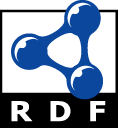An empirical assessment of the indigenous Sumak Kawsay (living well): the importance of nature and relationships
Identificadores
URI: https://hdl.handle.net/10481/86360Metadatos
Mostrar el registro completo del ítemEditorial
Edward Elgar Publishing
Fecha
2020Referencia bibliográfica
Coral-Guerrero, C. A., Guardiola, J. and García-Quero, F. (2020) An empirical assessment of the indigenous Sumak Kawsay (living well): the importance of nature and relationships. In Katrin Rehdanz, David Maddison and Heinz Welsch (eds.) Handbook of Well-being, Happiness and the Environment, pp. 385–398, Edward Elgar Publishing: UK.
Patrocinador
This research has been partially supported by the Ministry of Economy, Industry and Competitiveness, the State Research Agency (SRA) and European Regional Development Fund (ERDF) (project reference ECO2017-86822-R).Resumen
The Andean indigenous way of life Sumak Kawsay (living well in Kichwa) is related to reciprocity, solidarity, collective participation, social justice, and harmony with nature and with the community. This paper uses a representative national sample in Ecuador to assess how certain features of Sumak Kawsay relate to subjective well-being. In this vein, we propose several variables associated with this particular way of life: collective participation activities (mingas), enjoying a portion of land (chakra), living in a rural area and indigenous identity. The results indicate that most Sumak Kawsay features are positively related to life and environmental satisfaction. An important exception is indigenous identity, which is negatively related to life satisfaction and not significant for environmental satisfaction. We suggest that Sumak Kawsay is important for subjective well-being in Ecuador, but indigenous people’s subjective well-being would benefit if their needs are better taken into account in the political arena.
![pdf [PDF]](/themes/Mirage2/images/thumbnails/mimes/pdf.png)






